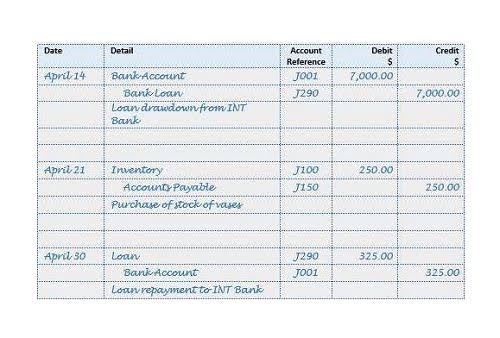
These expenses include direct material, direct labour, direct overheads, and indirect overheads etc. The direct cost is easily allocated in the product cost as we need to allocate the quantity in line with the usage. This option is best if you’re unsure of how to calculate your predetermined overhead rate or if you don’t have the time to do it yourself. You should calculate your predetermined overhead rate at least once per year. Again, this predetermined overhead rate can also be used to help the business owner estimate their margin on a product.
How confident are you in your long term financial plan?
Finally, using a predetermined overhead rate can result in inaccurate decision-making if the rate is significantly different from the actual overhead cost. The predetermined overhead rate is used to price new products and to calculate variances in overhead costs. Variances can be calculated for actual versus budgeted or forecasted results. The overhead rate has limitations when applying it to companies that have few overhead costs or when their costs are mostly tied to production. Also, it’s important to compare the overhead rate to companies within the same industry. A large company with a corporate office, a benefits department, and a human resources division will have a higher overhead rate than a company that’s far smaller and with fewer indirect costs.
Overhead Rate Formula and Calculation
To avoid such fluctuations, actual overhead rates could be computed on an annual or less-frequent basis. However, if the overhead rate is computed annually based on the actual costs and activity for the year, the manufacturing overhead assigned to any particular job would not be known until the end of the year. For example, the cost of Job 2B47 at Yost Precision Machining would not be known until the end of the year, even though the job will be completed and shipped to the customer in March. For these reasons, most companies use predetermined overhead rates rather than actual overhead rates in their cost accounting systems.
Create a Free Account and Ask Any Financial Question
- Besides his extensive derivative trading expertise, Adam is an expert in economics and behavioral finance.
- The most important step in calculating your predetermined overhead rate is to accurately estimate your overhead costs.
- The sales price, cost of each product, and resulting gross profit are shown in Figure 6.6.
- Larger organizations may employ a different predetermined overhead rate in each production department, which tends to improve the accuracy of overhead application by employing a higher level of precision.
- While it may become more complex to have different rates for each department, it is still considered more accurate and helpful because the level of efficiency and precision increases.
Our work has been directly cited by organizations including Entrepreneur, Business Insider, Investopedia, Forbes, CNBC, and many others. This team of experts helps Finance Strategists maintain the highest level of accuracy and professionalism possible. At Finance Strategists, we partner with financial experts to ensure the accuracy of our financial content.
- Fixed overheads are expected to increase/decrease per unit in line with the seasonal variations.
- Suppose following are the details regarding indirect expenses of the business.
- Therefore, the single rate overhead recovery rate is considered inappropriate, but sometimes it can give maximum correct results.
- A good rule of thumb is to ask yourself if the cost will be incurred regardless of how much product you’re making.
- For example, the total direct labor hours estimated for the solo product is 350,000 direct labor hours.
- Small companies typically use activity-based costing, while large organizations will have departments that compute their own rates.

11 Financial’s website is limited to the dissemination of general information pertaining to its advisory services, together with access to what is the predetermined overhead rate additional investment-related information, publications, and links.
- A predetermined overhead rate is an allocation rate that is used to apply the estimated cost of manufacturing overhead to cost objects for a specific reporting period.
- Our goal is to deliver the most understandable and comprehensive explanations of financial topics using simple writing complemented by helpful graphics and animation videos.
- This can be best estimated by obtaining a break-up of the last year’s actual cost and incorporating seasonal effects of the current period.
- A pre-determined overhead rate is normally the term when using a single, plant-wide base to calculate and apply overhead.
- The actual overhead rate is based on the actual amount of overhead to be absorbed and the actual quantum or value of the base selected (e.G., Direct wages, cost of materials, machine hours, direct labor hours, etc.).
- Now, let’s look at some hypothetical business models to see actual use-cases for predetermined overhead rates.

Both figures are estimated and need to be estimated at the start of the project/period. Predetermined overhead rates are essential to understand for ecommerce businesses as they can be used to price products or services more accurately. They can also be used to track the financial performance of a business over time.

It’s important to note that if the business uses the ABC system, the individual activity is absorbed on a specific basis. For instance, cleaning and maintenance expenses will be absorbed on the basis of the square feet as shown in the table above. Detailed cost analysis helps to estimate the cost of overheads with accuracy. Further, customized input from different departments can be obtained to enhance the accuracy of the budget. If the absorbed cost is more than the actual cost, an adjusting entry is passed to reduce the expenses.
Predetermined Overhead Rate (POR) Formula
This chapter will explain the transition to ABC and provide a foundation in its mechanics. It’s a simple step where budgeted/estimated cost is divided with the online bookkeeping level of activity calculated in the third stage. It’s called predetermined because both of the figures used in the process are budgeted.
